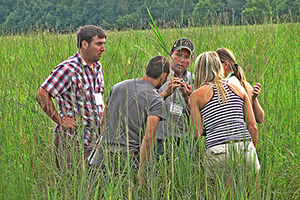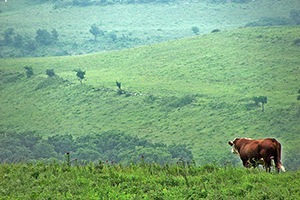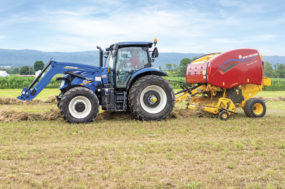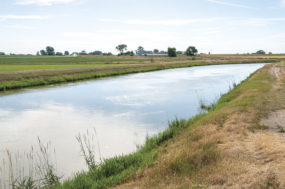 Late this summer I had the opportunity to travel across the country with a group of faculty and graduate students from five different universities.
We began in the Carolinas, traveled across Tennessee, then up through Missouri, into Kansas, Oklahoma and eventually Texas.
Our goal was to study grazing lands systems in different environments, and the tour included cow-calf, stocker and dairy operations with conventional and local and/or organic end-points.
Late this summer I had the opportunity to travel across the country with a group of faculty and graduate students from five different universities.
We began in the Carolinas, traveled across Tennessee, then up through Missouri, into Kansas, Oklahoma and eventually Texas.
Our goal was to study grazing lands systems in different environments, and the tour included cow-calf, stocker and dairy operations with conventional and local and/or organic end-points.
 The contrast and change in forage species and production from the Carolinas to the native prairies of the Kansas Flint Hills was very drastic.
The contrast and change in forage species and production from the Carolinas to the native prairies of the Kansas Flint Hills was very drastic.One of the aspects that stuck with me was the great diversity of forage species each producer utilized. This year has been severely wet for many producers in the Southeast, while the High Plains are recovering from extreme drought conditions over the past few years.
 These harsh swings in environmental conditions caused quite a bit of pressure on the forage stands in the regions, but producers who managed their forage systems for diversity were able to come out ahead when one specific forage didn’t perform well in the current environment.
These harsh swings in environmental conditions caused quite a bit of pressure on the forage stands in the regions, but producers who managed their forage systems for diversity were able to come out ahead when one specific forage didn’t perform well in the current environment.
Each producer also had his or her overall goals mapped out in regards to forage production. Being able to have a goal in mind to work toward and an idea of how certain production and grazing pressures affect that plan allowed the producers to be more flexible in forage utilization and reducing their reliance on outside inputs.
Every operation is unique and may require a different management style and group of forages. That diversity is something that should be highlighted so we can learn from our peers.
When it comes to your own forage management, have you sat down to outline the goals for your operation? Have you taken time to evaluate the diversity and input requirements from a broader perspective? FG
Ryan J. Goodman is a graduate research sssistant with the Department of Animal Science at the University of Tennessee, Knoxville. He can be reached by email.
PHOTOS
TOP: Researchers at the University of Missouri Southwest Center Research farm use ATV-mounted sensors to estimate forage quantity and quality, Mount Vernon, Missouri.
MIDDLE: Students and faculty take a closer look at warm season forages grown by University of Tennessee at Ames Plantation, Grand Junction, Tennessee.
BOTTOM: A Kansas State University hereford bull on Konza Prairie near Manhattan, Kansas. Photos by Ryan J. Goodman.










